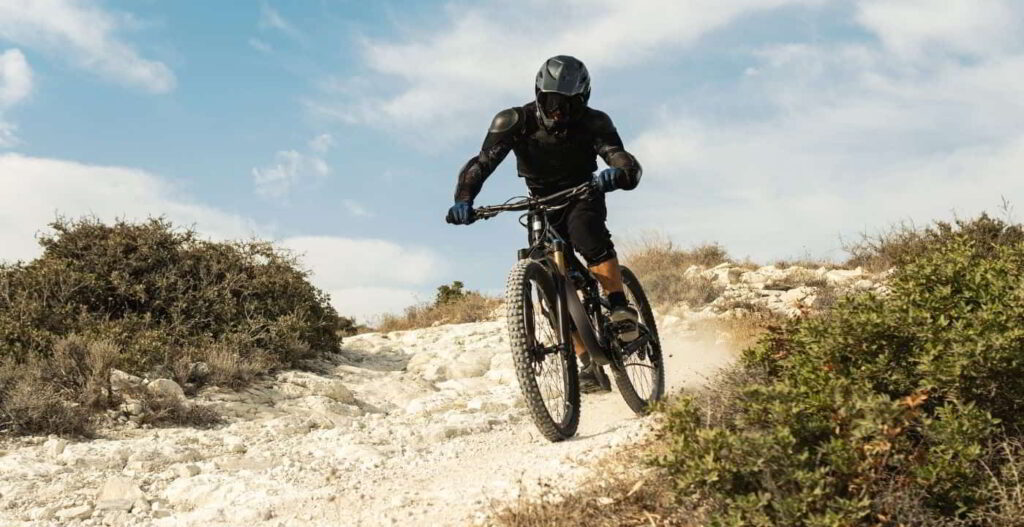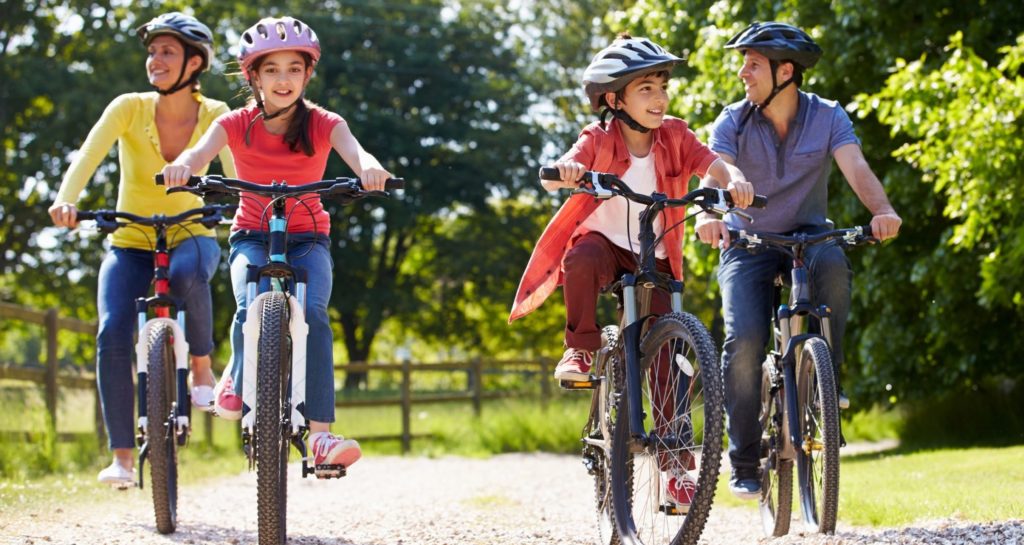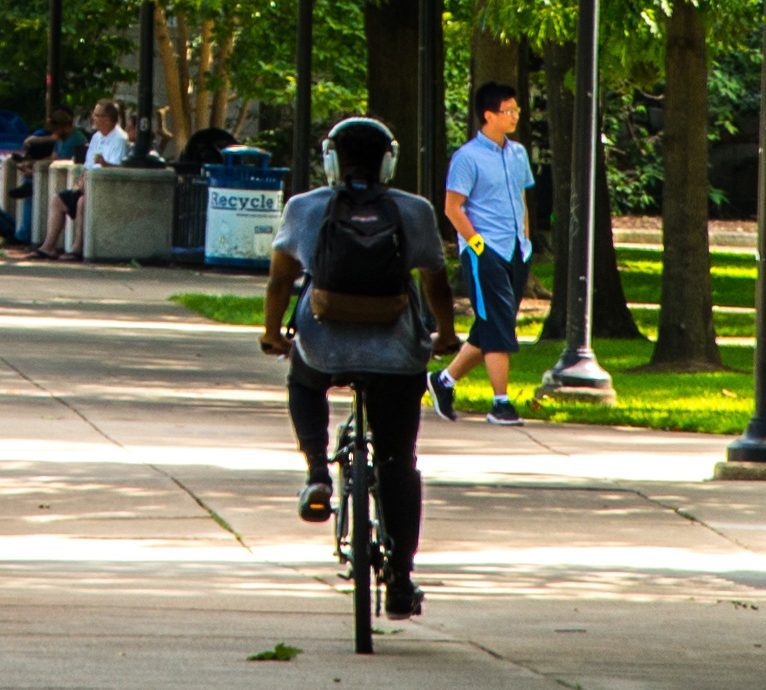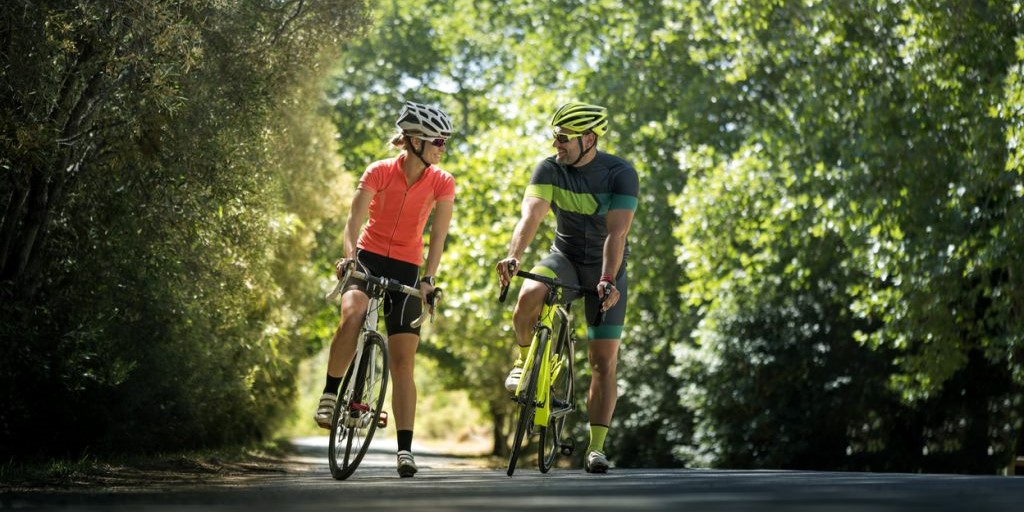Introduction

When it comes to biking, safety should always be a top priority. As an avid cyclist myself, I understand the importance of taking precautions to ensure a safe and enjoyable biking experience. In this article, I will share some valuable tips and guidelines for biking safety. Whether you are a beginner or an experienced cyclist, these practices will help you stay safe on the road.
Wear a helmet
One of the most crucial aspects of biking safety is wearing a helmet. A helmet protects your head in case of a fall or collision, reducing the risk of severe head injuries. When choosing a helmet, make sure it fits properly and snugly on your head.
Adjust the straps to ensure a secure fit. Remember, wearing a helmet can save your life, so never compromise on this essential safety gear.
Follow traffic rules

To ensure your safety and the safety of others, it is essential to follow traffic rules while biking. Treat your bicycle as a vehicle and obey all traffic laws. This includes stopping at red lights and stop signs, yielding to pedestrians, and using designated bike lanes whenever possible.
Obey traffic signals
Just like motorists, cyclists must obey traffic signals. Stop at red lights and wait for the green signal before proceeding. Similarly, yield to pedestrians at crosswalks and follow the right-of-way rules. By respecting traffic signals, you contribute to a safer biking environment for everyone.
Use hand signals
Hand signals are an effective way to communicate your intentions to other road users. Use hand signals to indicate when you are turning left, right, or stopping. This helps motorists and pedestrians anticipate your movements, reducing the risk of accidents. Practice these hand signals until they become second nature.
Stay visible
Visibility is crucial for biking safety, especially when riding in low-light conditions or at night. Here are some tips to enhance your visibility on the road:
Wear bright clothing
Wearing bright, fluorescent colors makes you more visible to motorists. Opt for neon or reflective clothing that stands out, even during the daytime. This helps drivers spot you from a distance, giving them ample time to react and avoid any potential collisions.
Use lights and reflectors
Installing lights and reflectors on your bike is essential for nighttime riding. Use a white headlight to illuminate the road ahead and a red taillight to make yourself visible from behind. Additionally, attach reflectors to your bike’s wheels, pedals, and frame to increase visibility from all angles.
Be aware of your surroundings

Being aware of your surroundings is crucial for biking safety. By staying alert and vigilant, you can anticipate potential hazards and react accordingly.
Scan for hazards
Constantly scan the road ahead for any potential hazards, such as potholes, debris, or parked cars. By identifying these obstacles early on, you can adjust your path or speed to avoid accidents. Remember to also check your blind spots before changing lanes or making turns.
Watch for parked cars
Parked cars can pose a significant risk to cyclists. Always be cautious when riding alongside parked cars, as doors can suddenly open, causing a collision. Give parked cars a wide berth and be prepared to react if a door unexpectedly swings open.
Use bike lanes or designated paths

Whenever possible, use bike lanes or designated paths for your biking journeys. These dedicated spaces provide a safer environment for cyclists, away from the flow of traffic. Familiarize yourself with the bike lanes in your area and plan your routes accordingly.
Stay focused and avoid distractions
.jpg)
To ensure your safety on the road, it is crucial to stay focused and avoid distractions while biking.
Avoid using headphones
Listening to music or podcasts through headphones can distract you from your surroundings and impede your ability to hear approaching vehicles or emergency sirens. Keep both ears free to listen for any potential dangers on the road.
Avoid texting or talking on the phone
Using your phone while biking is not only dangerous but also illegal in many places. Texting or talking on the phone diverts your attention from the road, increasing the risk of accidents. If you need to make a call or send a message, find a safe place to stop and do so.
Practice defensive biking

Defensive biking involves anticipating the actions of drivers and being prepared to react to sudden changes on the road.
Anticipate the actions of drivers
Always assume that drivers may not see you or may not follow traffic rules. Anticipate their actions and be prepared to yield or take evasive maneuvers if necessary. Maintain a safe distance from vehicles and avoid riding in their blind spots.
Be prepared to react to sudden changes
Sudden changes on the road, such as a car swerving or a pedestrian darting across, can catch you off guard. Stay alert and be ready to react quickly. Keep a firm grip on your handlebars and practice emergency braking techniques to stop safely in unexpected situations.
Keep your bike in good condition

Regular maintenance of your bike is essential for both performance and safety. Here are some key areas to focus on:
Check brakes and tires regularly
Ensure that your brakes are in good working condition and provide sufficient stopping power. Check your tire pressure regularly and inspect the tread for any signs of wear. Properly inflated tires with good traction are crucial for safe biking.
Ensure proper bike fit
A bike that fits you properly enhances your control and comfort while riding. Adjust the seat height, handlebar position, and overall bike fit to suit your body proportions. A professional bike fitting can help you achieve the optimal setup for your riding style.
Conclusion
Biking safety is a responsibility that falls on every cyclist. By following these tips and guidelines, you can significantly reduce the risk of accidents and enjoy a safe biking experience. Remember to wear a helmet, follow traffic rules, stay visible, be aware of your surroundings, use designated paths, avoid distractions, practice defensive biking, and keep your bike in good condition. Stay safe and happy biking!null
FAQ
-
What are the safety things for riding a bike?
Wear equipment to protect you and make you more visible to others, like a bike helmet, bright clothing (during the day), reflective gear, and a white front light and red rear light and reflectors on your bike (at night, or when visibility is poor).
-
What is the most important safety rule in cycling?
To maximize your safety, always wear a helmet AND follow the rules of the road. Bicycles in many States are considered vehicles, and cyclists have the same rights and the same responsibilities to follow the rules of the road as motorists.
-
How can I be safe while cycling?
1. Stop at red lights. Don’t ride through red traffic lights.
2. Stay central on narrow roads. Try to ride away from the gutter.
3. Stay away from parked cars.
4. Stay back from HGVs.
5. Always pay attention.
6. Make eye contact.
7. Don’t pavement cycle.
8. Wear bright clothes. -
Where do most bike accidents occur?
MORE SPECIFICALLY:
Twenty-seven percent of fatal bicycle accidents happened at intersections.
Sixty-three percent occurred in some other area of the road besides intersections.
Ten percent of fatal bicycle accidents occurred at other locations like sidewalks, medians, trails, roadsides, parking lanes, and more.
Originally posted 2023-09-12 03:00:16.

